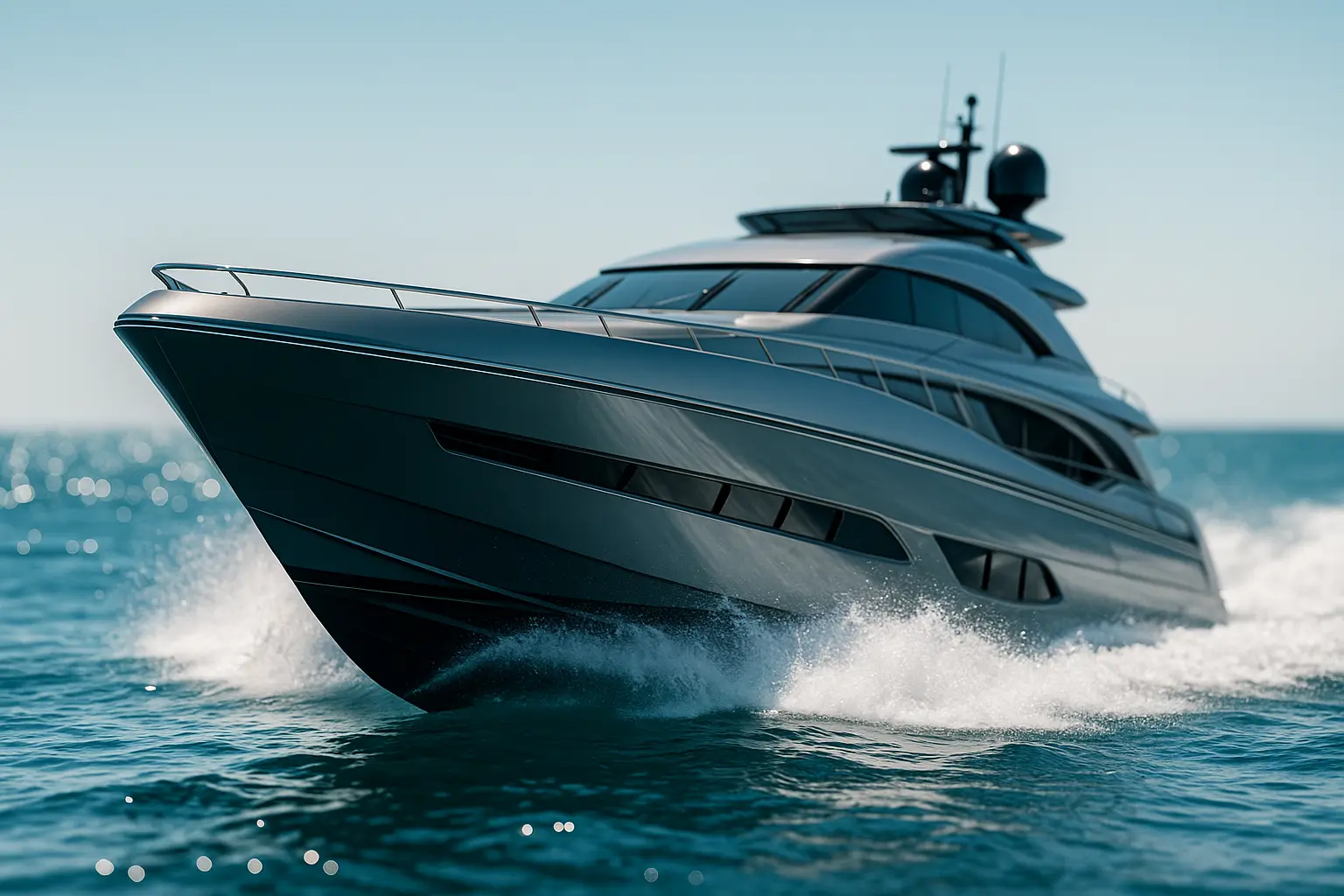In the vast world of marine engineering, understanding the intricate relationship between form and function is crucial. Picture a ship slicing through the water with elegance and efficiency, its design a testament to the profound knowledge of hydrodynamic principles. Our journey today delves into the nuanced balance of form and flow, exploring how these elements shape the performance of marine vessels. Ready yourselves for an exploration where science meets art, where the coefficient of drag dances with thrust to create the perfect ballet of motion. This deep dive into the seas of innovation invites you to envision the possibilities when design and performance coalesce into a harmonious entity.
The Essence of Flow: Understanding Hydrodynamics
Hydrodynamics, the science of flow and forces in liquid mediums, stands as a cornerstone in the realm of marine design. At its heart lies the intricate dance of liquid dynamics, where understanding the fluid’s behavior over a hull surface is paramount. This analysis informs every nuance of a ship’s design, from its shape to its speed.
Fluid Dynamics Unveiled
In the world of hydrodynamics, understanding the fluid dynamics at play involves breaking down the interactions between water and hull. These interactions, governed by wave formation and drag resistance, determine the efficiency of a vessel’s movement. Engineers meticulously calculate these forces, using modeling techniques that emulate real-world conditions.
Wave Patterns and Resistance
The key to minimizing resistance lies in understanding wave patterns. Waves created by the vessel as it moves through the water contribute significantly to drag. By optimizing the hull design, engineers can manipulate these wave patterns, reducing the overall resistance and thus improving efficiency.
Dimensional Analysis
To understand how forces interact across different scales, engineers employ dimensional analysis. This technique allows them to predict how smaller models will perform when scaled up. It’s a vital tool in ensuring that the eventual marine vessel mirrors the exceptional performance of its smaller counterpart.
Designing for Excellence: The Role of the Hull
A vessel’s hull, its primary body structure, is where design and performance intersect. Remember, the hull isn’t just a static form; it’s a dynamic interface between the ship and the sea.
Optimizing Hull Shapes
Crafting an ideal hull shape requires a keen understanding of flow dynamics. Designers aim to create a shape that slices through water with minimal resistance. The goal? Reduce the drag coefficient while enhancing thrust efficiency. Factors like speed, weight, and intended use all play roles in determining the ideal hull shape.
Material Matters
The choice of materials can dramatically affect performance. Advanced composites and innovative alloys offer strength without excessive weight, improving buoyancy and fuel efficiency. Material selection is a delicate balance between cost, weight, and durability.
Hydrofoil Integration
One of the modern marvels in marine design is the hydrofoil—appendages fitted to the hull to lift it above the water at high speeds. This reduces the wetted surface area, significantly lowering drag. By lifting the hull, hydrofoils allow ships to achieve greater speed and efficiency.
Performance Parameters: Speed, Thrust, and Beyond
Defining a vessel’s performance goes beyond mere speed; it’s about optimizing every system to work harmoniously.
The Thrust Factor
Thrust is the force that propels the vessel forward, and optimizing it is crucial for performance. Advanced propulsion systems, from traditional propellers to cutting-edge waterjets, are all evaluated for efficiency. The right propulsion system ensures that the energy used translates into effective motion.
Speed Considerations
Speed is a critical performance parameter, but it’s not merely about going fast. It’s about maintaining efficiency at high speeds without compromising on safety or stability. This involves carefully tuning the hull design, propulsion, and weight distribution.
Forces in Harmony
Every force acting on the ship, from thrust to drag, must be meticulously balanced. Dimensional considerations ensure that these forces remain within safe bounds. By achieving this balance, vessels can operate smoothly under various conditions, maximizing performance.
The Human Touch
Ultimately, no matter how advanced the technology, human input is essential. Performance is as much about the crew’s skill as it is about the vessel’s design. Seamless collaboration between man and machine that enhances both safety and efficiency.
As we set our sights on the horizons of innovation, the world of marine design continues to evolve, integrating modern technology and age-old principles of hydrodynamics. With each wave of advancement, the boundaries of what’s possible are pushed further, transforming the way vessels interact with the mighty oceans.
The ongoing dance between design, performance, and technology promises groundbreaking advancements. From eco-friendly materials to smarter dimensional modeling, the future beckons with possibilities that could redefine speed and efficiency as we know it.
In essence, the art of hydrodynamic design isn’t merely about crafting vessels that conquer the seas; it’s about pioneering the journey toward a more sustainable and efficient marine future. As we navigate these waters, let us remember that true progress is the blend of technical prowess and innovative vision. Together, we sail toward a horizon where each ship is a masterpiece of form, function, and forward-thinking design.
FAQ
What is the significance of hydrodynamics in design?
Hydrodynamics plays a crucial role in design as it focuses on how fluids move around objects, influencing both efficiency and performance. Understanding these dynamics can lead to improved design in areas like marine vehicles, reducing drag and enhancing speed.
How does hydrodynamic design impact the performance of marine vessels?
Hydrodynamic design optimizes the shape of marine vessels, minimizing resistance and maximizing propulsion efficiency. This can lead to faster speeds, increased fuel efficiency, and improved stability in water.
What are some common methods used in hydrodynamic analysis?
Hydrodynamic analysis often involves computational fluid dynamics (CFD) simulations, experimental testing in water tunnels or towing tanks, and the application of mathematical models to predict fluid behavior around various forms.
How is hydrodynamic design applied in sports equipment?
In sports equipment, hydrodynamic design is used to reduce drag and enhance performance. For instance, swimsuits are designed to mimic the skin of marine animals, while surfboards and kayaks are shaped to glide smoothly over water.
What challenges are commonly faced in hydrodynamic design?
Designers often encounter challenges such as balancing stability with speed, managing turbulence, and predicting fluid behavior under various conditions. These complexities require precise calculations and simulations to achieve optimal performance.


